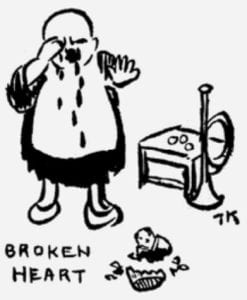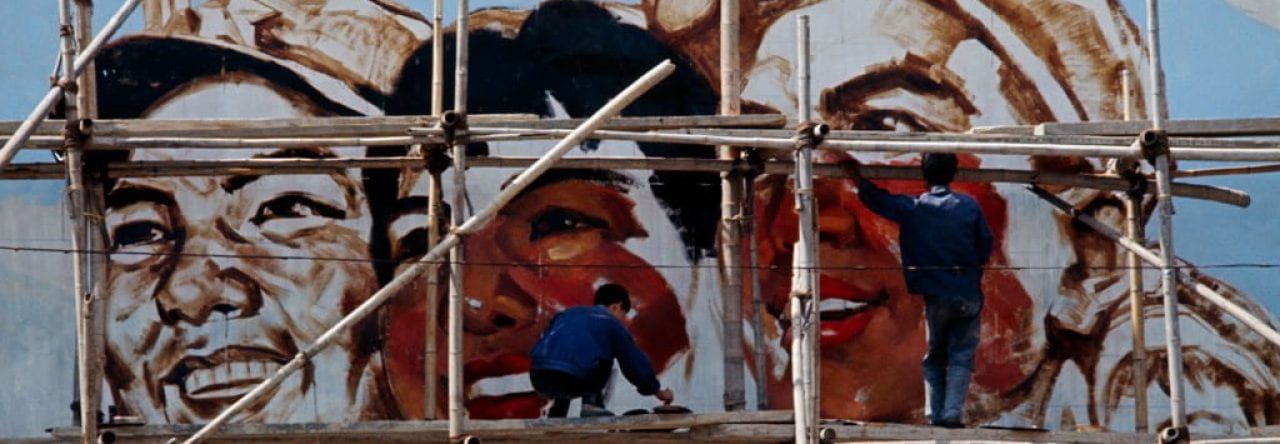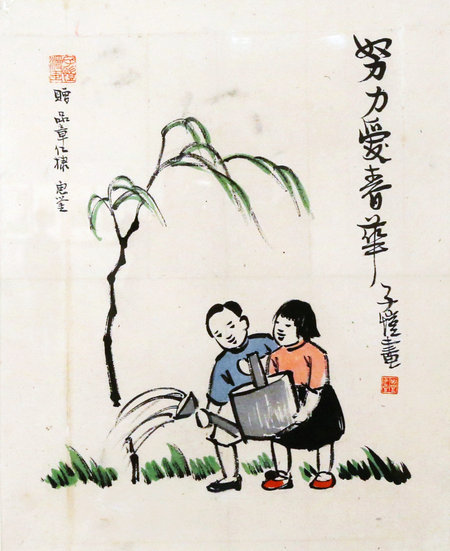Feng Zikai was an influential artist spanning from 1898 to 1975. Feng Zikai was well known for his cartoons focused on the message of innocence. His work took traditional Chinese ink techniques to create easy to interpret works that would be enjoyable to viewers of any age. Feng Zikai created comics during eras of political conflicts, such as the Sino-Japanese war of 1937-1945, and the Chinese Civil War of 1945-1949. With times of intense political conflict such as these, artists were limited in their creative liberty. Many popular well-accepted works of this period followed certain guidelines and political propaganda messages. Feng Zikai focused on his messages of innocence and the image of children instead of creating overly political comics which had set him apart from other artists of this time. Feng Zikai was a father, and it was no secret that his own children had served as an inspiration for his works. The familial ties that he held to his subjects allowed for his work to be even more intimate. Today, Feng Zikai’s art is praised for being some of the first children’s illustrations while also providing beautiful messages of innocence that everyone could hold onto.
For my exhibition, I wanted to focus on one of the most prominent and important themes that Feng Zikai had repeatedly used. The imagery of children and the metaphor for innocence is important in much of Feng Zikai’s works, and for my exhibit I would like to honor that. I would like to display some of his most impactful works with the imagery of children used in it, such as “Broken Heart” and the “Education” series that he had created. I found the way that Feng Zikai used symbolism was beautiful and perfectly captured the essence of childhood and humility. These two works capture the imagination and the weight of emotion that a child understands more than an adult. In “Education No 2” the child is seen pretending to have a bike with fan plants. The child seems content and fulfilled despite the simplicity of their belongings. On the other hand, the child in “Broken Heart” is shown in distress due to a broken toy. This image is a large contrast to the political setting that Feng Zikai had been in as he worked on this image. His works feel light and gentle, and with my exhibit I would like to reflect that. The aspect of innocence was more powerful than politics in Feng Zikai’s work, and the exhibition would reflect that as well.


Left: “Broken Heart”, 1926 Right: “Education No 2” 1927
Bibliography:
Hung, Chang-Tai. “The Fuming Image: Cartoons and Public Opinion in Late Republican China, 1945 to 1949.” Comparative Studies in Society and History 36, no. 1 (1994): 122–45. http://www.jstor.org/stable/179329.
Laureillard, Marie. Regret of spring: The child according to Feng Zikai. 2014.
Accessed April 20, 2023. https://hal.science/hal-00983929/document.




